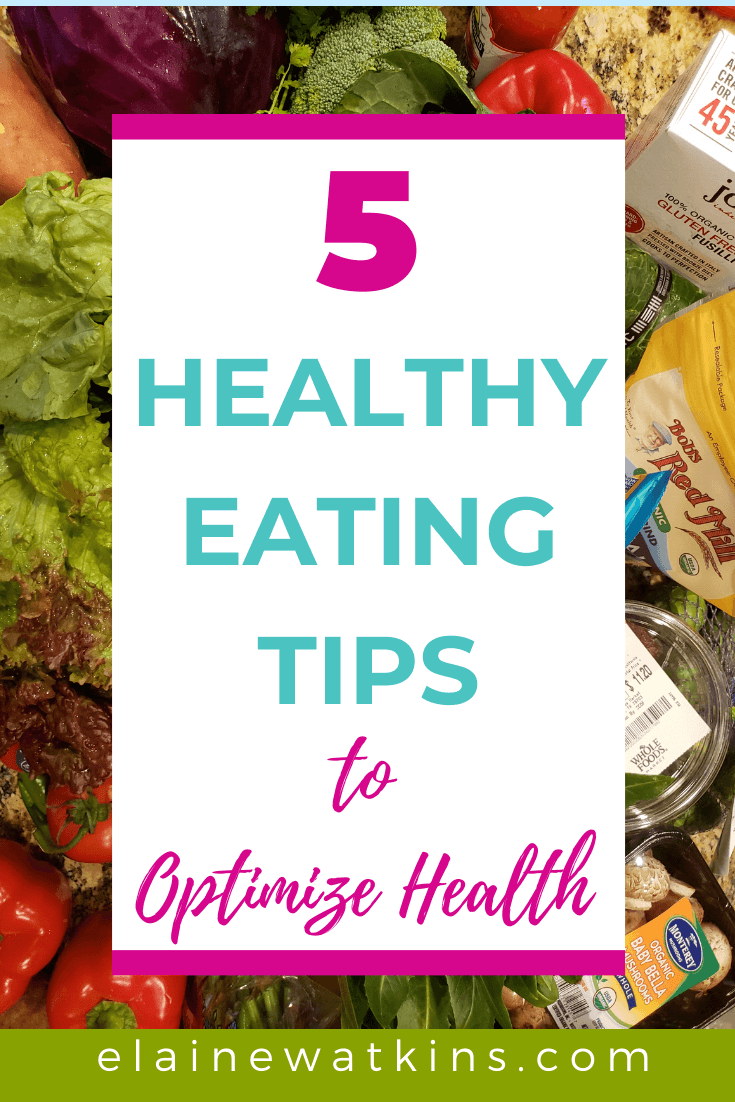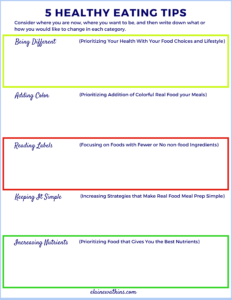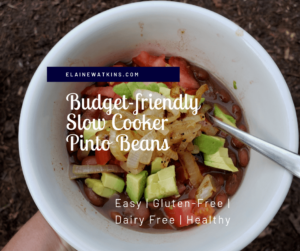5 Healthy Eating Tips to Optimize Health
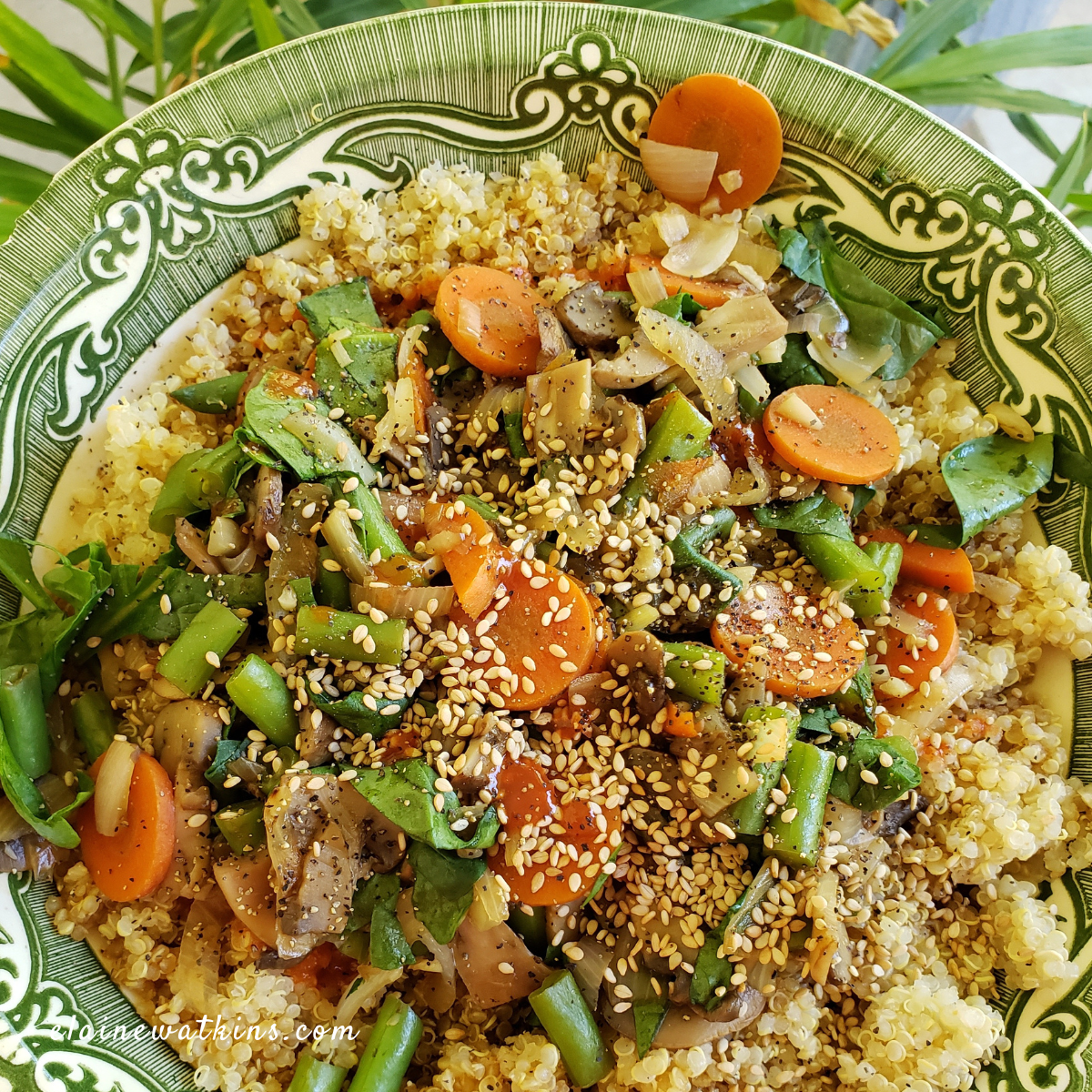
If you want to be healthier, then you definitely want to think about the 5 healthy eating tips we’re focusing on today to optimize your health.
The fact that there are so many areas you can work on to improve your health can be overwhelming, but food is most often The Big Player, because:
- you eat 2-6 times each day
- the fuel your body recognizes and is either nourished by or harmed by repeatedly every day
- you can totally control what you eat
- you don’t have to be perfect
While genes do play a role in our overall health, most knowledgeable experts report roughly a 20% genetic impact on health. The remaining 80% is coming from your daily lifestyle choices and includes what you eat, how active you are, and so on.
So we’re going to step outside that box and look at 5 healthy eating tips you can focus:
- Being Different
- Adding Color
- Reading Labels
- Keeping Meals Simple
- Maximizing Nutrient Density
CLICK TO REQUEST THE 5 HEALTHY EATING TIPS PRINTABLE
Being Different and Prioritizing Health
As you look around while you’re at the grocery store, work, or family reunions, check out the seen and unseen health challenges that the majority of people around you are facing. Listen as they talk about experiences, including the health challenges they are dealing with, dismissing, or completely unaware of but is oftentimes plain as the nose on their face.
You might even experience a discussion or two about what prescriptions everybody is taking or a comment or two belittling your choices to get healthier.
But the reality is…
If you’re eating what everybody else is commonly eating, then odds are you are or will be dealing with what others are commonly dealing with including but not limited to: 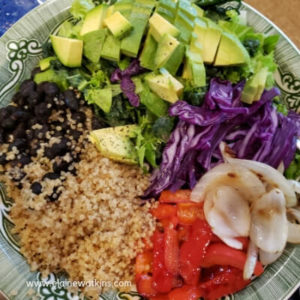
- heart disease
- diabetes
- weight problems
- hormone issues
- energy problems
- cancer
- pain
Since most of us don’t really have the extra time or money for all those doctor’s appointments and prescriptions (+ side effects and more prescriptions) already, why not start making health-supporting changes Now that can help you potentially avoid them completely, minimize them, or at least do whatever you can to delay them.
Adding Color
Oftentimes when we look at the meals that people are eating that make up the Standard American Diet (also known as SAD), we see Lots of tans, browns, and grays including:
- breads and pastas
- meats and gravies
- fried foods (including battered foods)
- processed, packaged foods
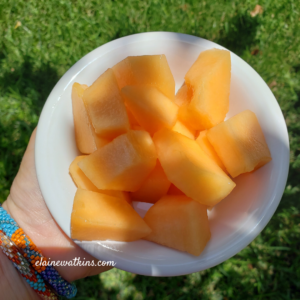 So this isn’t meant to be an exhaustive list, and I’m also not here to pass judgement.
So this isn’t meant to be an exhaustive list, and I’m also not here to pass judgement.
My question for you to consider is what percentage of your typical daily food intake comes from these groups?
Maybe to you that might look like:
- breakfast of cereal with milk, toast with butter, and orange juice
- mid-morning snack of a glazed donut someone brought to work to share
- lunch is a ham and cheese sandwich with Doritos and a soda and some homemade chocolate chip cookies from a package
- afternoon snack of a banana
- dinner arrives with chicken fried steak, mashed potatoes, and carrots and a few more homemade chocolate chip cookies
There are dozens of ways you can easily make these healthier meals and snacks. But if we focus on adding color alone, what about simple changes like:
- adding fresh berries to the side of your cereal or replacing the butter on that toast with some avocado slices and salsa
- skip the glazed donut and choose a sliced apple with almond butter and cinnamon
- replacing the ham and cheese with a filling dollop of avocado hummus on top of some leafy greens, tomatoes, and purple cabbage slices or replacing those chips with a healthier chip option
- replacing that batter on the steak with a sauteed peppers and onions topper with green beans on the side, or enjoying a homemade chocolate chip cookie as a topping to some yummy mango, cherry, banana nice cream
Obviously these are just examples, but challenge yourself to “eat the rainbow” everyday, meaning real food covering as a wide variety of real colors and real nutrients. Not synthetic. Real. 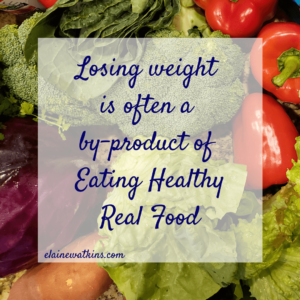
Reading Labels
Next, get busy reading labels as you make your grocery choices.
I know we started doing this gradually, as we began to change what we were eating.
I even spent one time at the store reading the labels of All the pasta options at the primary store I went to at that time.
It was definitely an education.
However you decide works for you, as you’re looking at foods coming from bags, cans, or boxes, start reading the labels and see what’s included.
While some options can mean easy access to healthy meals and snacks, others might include ingredients that you might prefer avoiding.
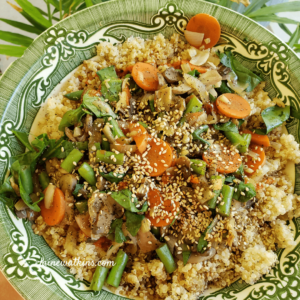 Look for options that:
Look for options that:
- have fewer ingredients
- include (and preferably only include) ingredients you can easily identify as food
- achieve a high real food nutrient availability
Sometimes you find surprise ingredients where you least expect them, like the calorie dense oil typically added to cranberries or Since pre-seasoned foods often have loads of salt, oils, sugars, and generalized names of unidentifiable ingredients, you’re also usually better off going for unseasoned or minimally seasoned and then adjusting flavors yourself as you prepare your meals at home.
You might be surprised what unexpected ingredients you’ll find.
So read labels and choose wisely.
Keeping Meals Simple
There’s absolutely nothing wrong with preparing real food ingredients simply. In fact, as you continue to make changes that include more colorful and fresh foods, your taste buds will usually wake up to the delicious flavors of those basic foods more and more to the point where old cravings to not-so-healthy options fade away.
And since the foods that so many commonly crave are actually manipulated to be addictive, they’re definitely worth working out of your meal routines.
I know I didn’t think I liked broccoli. But I also only had broccoli served as a mushy ingredient in casseroles and such with lots of salt, oil, and creams of something. I didn’t know how yummy it was when it wasn’t overcooked and camouflaged until I was an adult with kids.
Same thing with sweet potatoes, cabbage, and so many other delicious real foods that I Love today.
And it’s actually easy and cheaper to prepare them now.
Choose meal options with:
- fewer ingredients
- less prep work
- less or no cooking
- as fresh as possible
Maximizing Nutrient Density
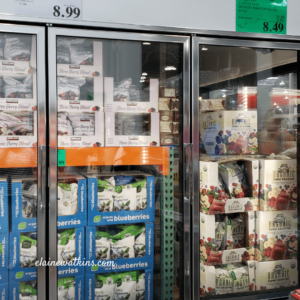 All of the 5 healthy eating tips work together really well when you planning and building meals, but let’s focus on nutrient density for a moment.
All of the 5 healthy eating tips work together really well when you planning and building meals, but let’s focus on nutrient density for a moment.
Let me start here by saying I have two primary reasons why I always want to try to maximize nutrient density:
- maximizing the benefits from every bite I take to perfectly feed my body to help me feel good, have energy, think clearly, and thrive
- while also minimizing my grocery budget smartly
If I’m going to take the time and money I have available to choose food to serve my family, I want a big return on my investment.
So in addition to the simple meals list, let me add for you to also consider:
- choosing real food and eat as fresh as possible
- prepare meals minimally
The longer you cook your fruits and vegetables, the more you typically lower the nutrient density, and usually the flavor too.
So whenever possible, consider serving them raw, lightly steamed or sauteed when possible. And when you steam and saute, plan out your cooking order and length of time cooking so that all is served when it’s reached its brightest color and with a slight firmness.
Of course you can get your freshest selection of fruits and vegetables from your own garden or nearby farms and farmers’ market, but definitely check out both whole and pre-chopped fresh and frozen fruits and vegetables at your area grocery stores too.
Surprisingly, frozen can sometimes give you more nutrient availability simply because they were picked when ready rather than early to allow for transport time but when that fruit or veggie wasn’t quite at it’s peak.
I’ve gotten some great deals on some great frozen options including:
- broccoli
- corn
- strawberries
- mangoes
- peas
- mixed berries
I don’t really save money when I buy the smaller bags, so I’m usually going for the bigger bags and plan meals will use up my choices timely.
What Now?
Just because I’m tossing these tips out there, they mean nothing if you don’t take action.
So depending upon where you are in your health journey, where do you struggle?
Do you need to:
- develop your strategy that prioritizes your health, in order to avoid faltering when you’re meal planning, picking a snack, or confronted by others
- create a doable plan to help you succeed in consistently adding colorful real, nutritious food to what you currently eat
- become more familiar with what ingredients are included in your foods
- incorporate strategies that help you make deliciously simple meals
- think about nutrients in what you eat and how you can increase the benefits of what you buy
I’ve created a tool that can help you think through where you are now in one or more of these areas and how you would like to change. Just click the image that follows, print, and start considering how you can prioritize your health:
CLICK TO REQUEST THE 5 HEALTHY EATING TIPS PRINTABLE
You’re Unique Pace for Incorporating These 5 Healthy Eating Tips
Making changes in even one of these areas is a start to a healthier future, so start where you are and move forward.
It doesn’t matter what other people say, and it doesn’t really matter what other people are doing either.
And for more reading to help you on your health-supporting journey, check out these posts:
